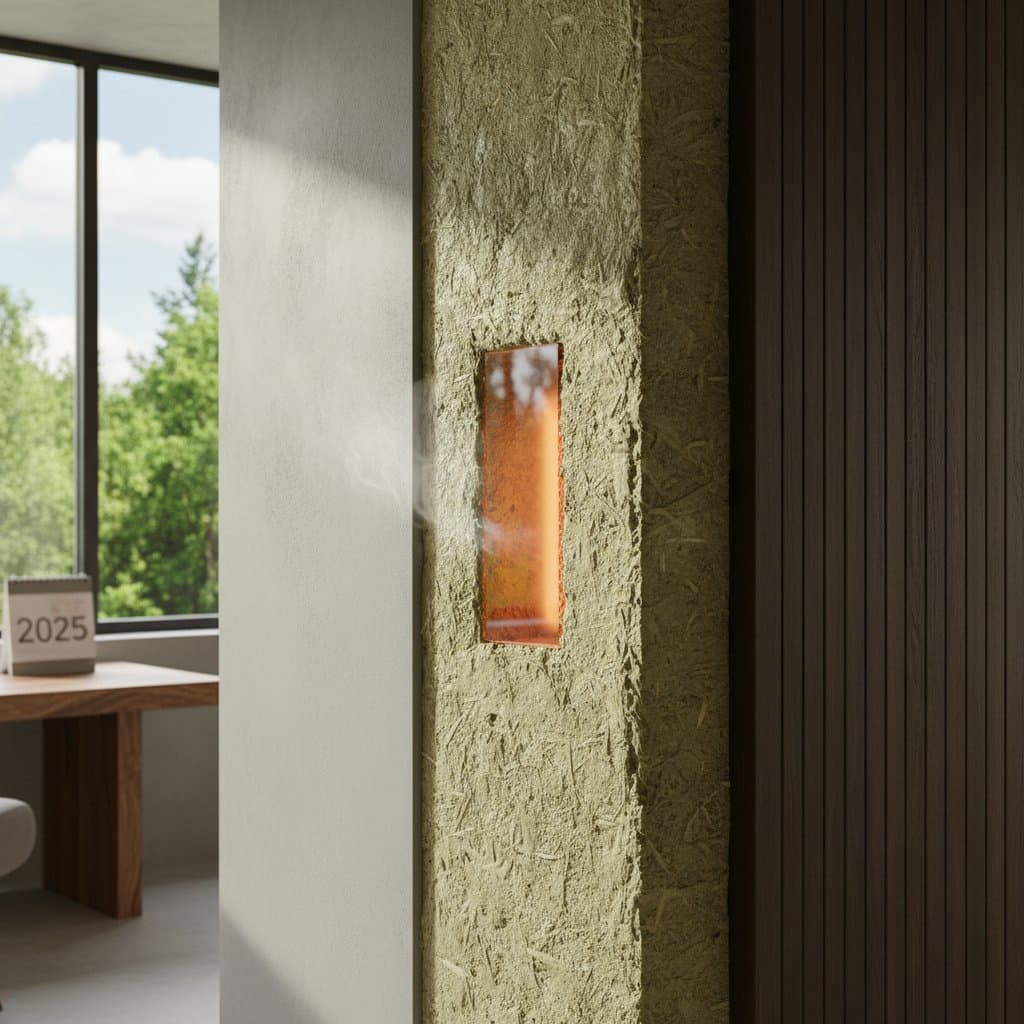Mycelium Insulation: A Sustainable Revolution for Modern Homes in 2025
Essential Overview
Mycelium insulation represents a bio-based innovation derived from fungal networks. This material serves as a renewable and fully compostable alternative to traditional synthetic options. It matches the thermal and acoustic performance of fiberglass and foam while providing distinct environmental advantages.
Homeowners benefit from enhanced energy efficiency and healthier indoor environments. Initial costs exceed those of conventional products. Key considerations include regional climate differences, adherence to local building codes, and availability of skilled installers. These factors influence installation feasibility and return on investment.
Applications range from targeted retrofits in attics and walls to comprehensive use in new constructions. This versatility accommodates various project scales and budgets.
Financial and Environmental Impacts
Selecting the right insulation influences more than immediate comfort. It affects long-term expenses, environmental responsibility, and property value. Proper insulation reduces heating and cooling demands, potentially lowering utility bills by 20 to 40 percent based on local climate and HVAC system performance.
Mycelium contributes to carbon sequestration during growth and decomposes naturally at the end of its life. This process positions it among the most planet-friendly insulation choices. In competitive housing markets, eco-friendly features attract buyers and elevate property values through certifications and visible sustainable upgrades.
Cost comparisons highlight the initial difference. Fiberglass batts range from $0.50 to $1.00 per square foot. Mycelium panels cost $2.50 to $4.00 per square foot, with prices expected to decrease as production expands. Over time, the premium diminishes thanks to mycelium superior durability, minimal maintenance needs, and avoidance of disposal fees for non-degradable materials.
Analyzing Costs and Returns
Evaluate value by examining a standard 1,500-square-foot home requiring approximately 10,000 square feet of insulation. A fiberglass installation totals $5,000 to $10,000, including limited recycling options at the end of life. Mycelium setups cost $25,000 to $40,000 due to the specialized bio-production methods.
Payback arises from multiple angles. Annual energy savings reach $800 to $1,200 for average households. Across 20 years, these accumulate to $16,000 to $24,000, offsetting much of the initial outlay. Additional gains include heightened appeal to eco-aware buyers, lower expenses for air quality maintenance, and simplified waste management.
Target mycelium application in high-impact areas such as exterior walls or roofs to optimize heat retention. Consult local utilities for rebates on green materials, which accelerate the break-even period.
Benefits for Health and Comfort
Mycelium extends beyond performance metrics to promote occupant well-being via superior indoor air quality. Synthetic insulations frequently emit volatile organic compounds, and fiberglass may release irritating fibers. Mycelium avoids harmful chemicals and intensive processing, resulting in reduced respiratory issues and allergic reactions.
The material regulates moisture effectively, preventing the humid conditions that foster mold. This feature proves especially valuable in homes with children or older adults by maintaining consistent humidity levels year-round. Overall, these attributes foster a safer, more comfortable living space without compromising insulation efficacy.
Preparing for Evolving Standards
Incorporating mycelium aligns properties with emerging regulations and trends emphasizing energy conservation and reduced emissions. Updated building codes demand higher efficiency, and programs like LEED favor bio-based solutions. Early adoption sidesteps expensive retrofits and enhances market positioning.
Mycelium endures effectively over decades with little degradation. Upon replacement, it composts with ease, bypassing landfills and associated fees. This lifecycle supports broader sustainability efforts amid tightening resource constraints and shifting policies.
Addressing Homeowner Concerns
Does mycelium insulation attract pests like insects or rodents?
The dense composition and inherent fungal properties repel common household pests, ensuring long-term material integrity.
How does it handle fire exposure?
Mycelium chars in a controlled fashion when exposed to heat. This behavior contrasts with petroleum-based foams that melt or emit toxic smoke, thereby enhancing fire safety.
How does it compare to spray foam?
Spray foam achieves higher R-values per inch but relies on non-renewable resources and poses disposal challenges. Mycelium delivers comparable protection alongside low emissions, renewability, and health safeguards.
Is DIY installation possible?
Experienced homeowners might handle loose-fill variants in accessible locations. However, rigid panels demand professional installation to comply with codes and achieve optimal sealing.
Steps to Implement Mycelium Insulation
Begin with a professional energy audit to pinpoint ideal installation sites. Obtain estimates from contractors experienced in bio-materials, emphasizing warranties and performance guarantees. Consider hybrid configurations, applying mycelium in priority zones and standard materials in secondary areas to manage expenses.
Explore green financing options or tax credits for eco-upgrades. Monitor emerging suppliers as the industry grows, which could reduce costs and expand choices. This methodical process yields an efficient, environmentally sound enhancement.
Realizing Lasting Home Value
Mycelium insulation embeds sustainability directly into residential spaces. It generates tangible savings and elevates daily living quality. The material appeals to buyers valuing intentional, green design, transforming ordinary homes into resilient, nurturing environments for years to come.










